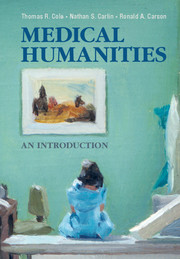Book contents
12 - Studying Medicine
from Part II - Literature, the Arts, and Medicine
Summary
As medicine becomes increasingly sophisticated, its technical sides and human sides seem to be growing ever farther apart.
– Ellen FoxAbstract
This chapter provides an “insider’s view” of medical education since the 1960s. Relying on the voices and writings of students and reformers, it examines student protests against injustice and against a dehumanizing education as well as a growing skepticism about an emphasis on biomedical science and technology as adequate preparation for clinical practice. Then, with a focus on the recent rise in humanities courses and full-fledged medical humanities programs in many medical schools, it considers how medical education is adapting to meet the challenges of the twenty-first century.
INTRODUCTION
Chapter 3 provided a historical sketch of the contours of medical education from antiquity through the twentieth century. Chapter 12 provides an “insider’s view” of how studying medicine has been experienced by students and trainees and viewed by reform minded educators in an era dominated by a bioscience and technology ethos.
In the decades following the publication of the Flexner Report in 1910, medical educators aspired to make medicine scientifically sound, and virtually all medical curricula conformed to the Flexner model – two years of basic science study followed by two years of clinical training – which remained dominant for decades, and whose fundamental framework was not seriously challenged for a century.
- Type
- Chapter
- Information
- Medical Humanities , pp. 197 - 208Publisher: Cambridge University PressPrint publication year: 2014



